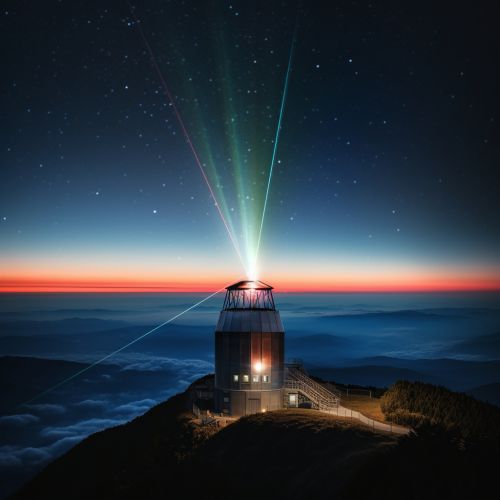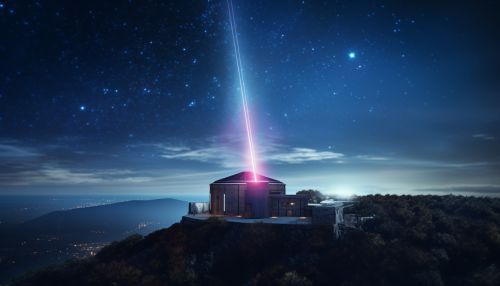Laser guide star
Introduction
A laser guide star (LGS) is an artificial star image created for use in astronomical adaptive optics systems, which are used to correct imaging problems caused by atmospheric distortion. Laser guide stars provide a reference light source in the sky for such systems, allowing astronomers to compensate for the effects of atmospheric turbulence on the light passing through it.
History and Development
The concept of the laser guide star was first proposed in the 1950s, but it was not until the 1980s that the technology became feasible. The first successful demonstration of a laser guide star was carried out at the Lick Observatory in 1989. Since then, the technology has been adopted by many other observatories and has been instrumental in a number of significant astronomical discoveries.


Working Principle
The principle behind the laser guide star is relatively straightforward. A laser beam is projected into the atmosphere from a ground-based observatory. This laser beam excites a layer of sodium atoms in the Earth's mesosphere, approximately 90 kilometers above the ground. The excited sodium atoms then re-emit the laser light, creating a bright point in the sky that can be observed from the ground. This artificial star is then used as a reference point to measure the distortion of the atmosphere.
Types of Laser Guide Stars
There are two main types of laser guide stars: sodium and Rayleigh.
Sodium Laser Guide Stars
Sodium laser guide stars (SLGS) use a laser that is tuned to the resonance frequency of sodium atoms in the mesosphere. The laser light excites the sodium atoms, causing them to emit light and create a bright point in the sky. Sodium laser guide stars are the most common type of LGS because they create a reference point that is high in the atmosphere, reducing the effects of atmospheric distortion.
Rayleigh Laser Guide Stars
Rayleigh laser guide stars (RLGS) use a laser that is not tuned to any particular atomic resonance. Instead, the laser light is scattered by the molecules in the atmosphere, creating a bright point of light. Rayleigh laser guide stars are less common than sodium laser guide stars because they create a reference point that is lower in the atmosphere, which means they are more affected by atmospheric distortion.
Applications
Laser guide stars are primarily used in astronomical observatories to improve the resolution of images taken by telescopes. They are an essential component of adaptive optics systems, which correct for the distortion caused by the Earth's atmosphere. By providing a reference point in the sky, laser guide stars allow these systems to measure and correct for atmospheric distortion, significantly improving the quality of astronomical images.
Laser guide stars have also been used in other applications, such as satellite tracking and free-space optical communication. In these applications, the laser guide star serves as a reference point for aligning optical systems.
Future Developments
The field of laser guide star technology is continually evolving, with ongoing research aimed at improving the brightness and stability of laser guide stars, as well as reducing the cost and complexity of the systems required to create them. Future developments in this field could include the use of multiple laser guide stars to improve the correction of atmospheric distortion, and the development of new types of laser guide stars that can be used at different altitudes or under different atmospheric conditions.
